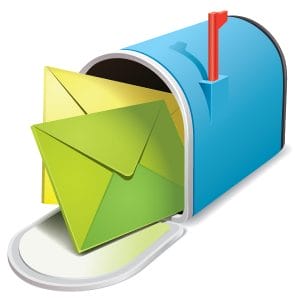 Your list (or who you are sending your message to) is the single most important element to any marketing campaign; take extreme care in choosing and verifying the source and accuracy of your list. Most people do not spend nearly enough time on this activity, and simply rent a list based on geography and company size. This is a surefire way to LOSE money on your direct mail campaign.
Your list (or who you are sending your message to) is the single most important element to any marketing campaign; take extreme care in choosing and verifying the source and accuracy of your list. Most people do not spend nearly enough time on this activity, and simply rent a list based on geography and company size. This is a surefire way to LOSE money on your direct mail campaign.- The offer is the second most important element to your direct mail campaign. If you don’t accurately match your message and offer to your target market your campaign will fail. Are the people you are mailing going to care about what you have to say? Are they going to think your offer is valuable and worth responding to? Most direct mail is off-target, boring, and doesn’t contain any offer, much less a good one. If you want direct mail to work for your business, you must make an incredibly irresistible offer that your target market will eagerly want.P.S. Just offering something for free doesn’t always guarantee a response. If you offer a “free consultation,” your offer is going in the trash. To ensure a good response, you have to sell the free offer as though it has value.
- Always, always, always have a deadline on your offer, or add urgency with scarcity (example: only 20 free gifts will be given away). Including urgency to respond is a critical part of making a direct mail offer work.
- When marketing to a new list of prospects, promote your strongest, most in-demand product or service first; once you get them to buy, cross-sell all your other products and services. Do not lead with products and services that appeal only to a few unless the list you are sending the offer to is very likely to want the product or service you are promoting (niche marketing).
- Never try to promote more than one product or service in a mailing. Focus on a single, “hot” product or service and use every inch of space to sell the merits of it. You can sell them other products and services once they become a client.
- Successful direct marketing is the process of making a commodity look like a specialty. If what you are selling is a commodity, you have to use your marketing copy, style, and personality to make it seem special or unique. The best way to learn how to do this is to watch infomercials or QVC selling kitchen appliances. They are able to turn ordinary appliances that could be purchased from any store into super, whiz-bang gadgets that sell at higher prices and usually with memberships to lock in recurring revenue.
- Whenever possible, put a personality or character into your mailings. An easy way to do this is to add your photo to the letter. People like to do business with people, not logos or buildings. The most successful direct mail appears to be a personal, one-on-one letter. Also, folksy, conversational copy outperforms stiff, corporate copy every time.
- Always try to make your mail look like a personal letter rather than a promotional piece. America sorts its mail over the trash can. If it looks like junk mail, it will get throw out before it’s even opened. Make sure you take extra time creating the envelope and how it looks. This means NO LABELS. It instantly says, “junk mail.”
- Homemade-looking marketing often outperforms slick, professionally designed marketing communications.
- It is often a mistake to cheapen a marketing campaign just to save money. In almost every case, your response will drop when you remove copy, response forms, or other communication pieces inside a mailing. For example, I recently increased the response to one of my own mailings by 6% simply by adding a “Frequently Asked Questions” flyer on bright yellow paper. Postcards are inexpensive and easy to send, but the response to them is often very low when mailing to cold prospects. If you simply do not have the time or money to send out a larger, more involved mailing campaign, a postcard is better than sending nothing; however, you will get less of a response. Look for ways to add more meaningful communication pieces to your mailing package rather than take away to save time or money. Cheapening your marketing will end up costing you more in lost sales than it will save you in marketing costs.






